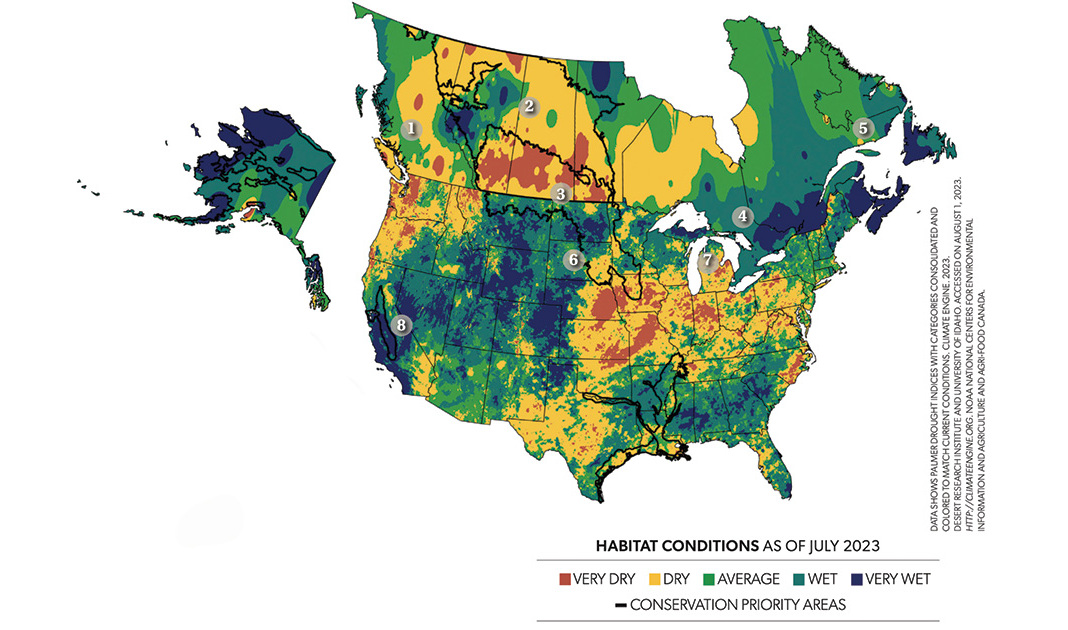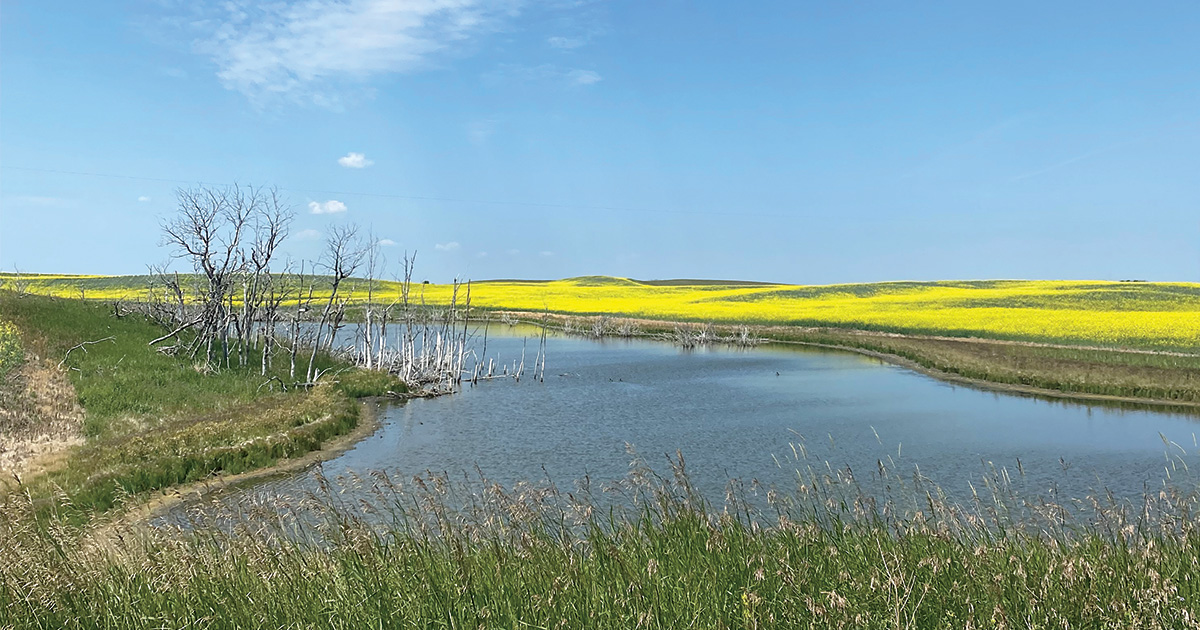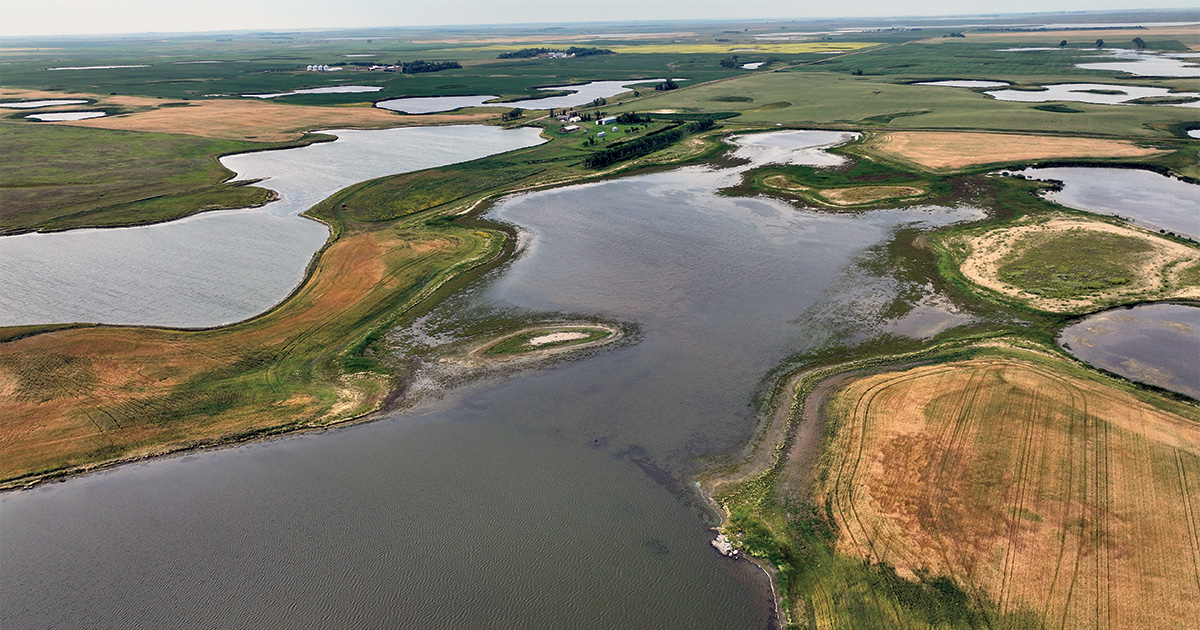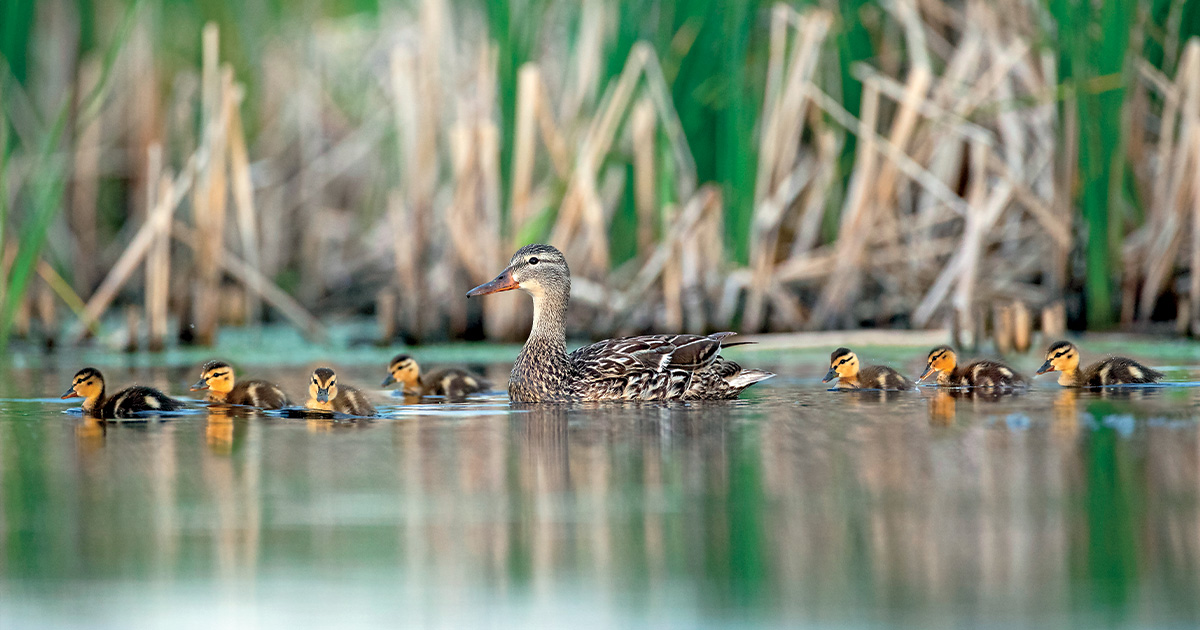Field Reports: Waterfowl Production Update
Wetland conditions were variable this year across the Prairie Pothole Region and other key breeding areas
Wetland conditions were variable this year across the Prairie Pothole Region and other key breeding areas
By DU Field Biologists

Most of British Columbia experienced abnormally dry to extreme drought conditions during late spring and early summer. Some coastal areas received less than half of average precipitation through late July. Water levels are low in many wetlands, and reports from the central interior suggest that waterfowl breeding efforts may have been impacted slightly
by dry conditions.
Dry spring conditions stretched from northern portions of the prairie provinces and British Columbia into the Northwest Territories, prompting an early start to the fire season. In the Yukon, spring arrived late, with temperatures remaining moderate until July, which helped maintain stable water levels. Despite lingering cool temperatures, waterfowl breeding efforts appear to have progressed normally in this region.

Across Prairie Canada, wetland conditions deteriorated over the summer due to a lack of rainfall. In late July, many small wetlands, such as this prairie pothole in southern Saskatchewan, were receding or had gone completely dry.
Dry weather prevailed across much of Prairie Canada this summer, with areas of extreme drought in parts of Alberta and pockets of moderate to severe drought elsewhere. Some of the driest areas received less than two inches of rain over a three-month span. In the east, deeper semipermanent wetlands, including those managed by DU Canada, continued to provide good habitat for waterfowl broods in many areas.
Precipitation was variable across Ontario and Quebec, but wetlands remained at normal to high levels in most areas throughout the breeding season. Good brood numbers have been observed by DU staff, and a strong fall flight of waterfowl from this area is expected. In addition, early reports suggest that productivity among northern-breeding snow geese improved this year.
Temperatures and precipitation were generally above average in Atlantic Canada this summer. Nesting and brood-rearing conditions were ideal for early nesters such as Canada geese, American black ducks, and mallards. However, high-water conditions and flooding may have impacted later nesters and overwater nesters in some areas.

In contrast to the parched landscapes north of the border, water was plentiful this spring across much of the US portion of the Prairie Pothole Region, especially in eastern North Dakota.
Runoff from above-average snowfall and timely spring rainfall created good to excellent wetland conditions for breeding waterfowl across much of North Dakota. Wetland conditions in South Dakota were more variable, with good moisture in the northern portions of the state and drier conditions toward the southeast. Eastern Montana also received much-needed moisture, and wetland and grassland conditions improved significantly this year. DU field biologists observed good numbers of waterfowl broods across US portions of the Prairie Pothole Region, boding well for the fall flight.
Recent rainfall improved wetland conditions in the northeastern states, although dry conditions persist in parts of the region. Additional rainfall is needed in the Great Lakes states, where much of the region is abnormally dry, with pockets of moderate to extreme drought in some areas.
Following several years of severe drought, wetland conditions have improved dramatically across much of the West, especially in the Central Valley of California and in eastern Washington and Oregon. Reports from Alaska indicate habitat conditions were generally favorable for breeding waterfowl, and a strong fall flight is expected from the state.

Ducks Unlimited uses cookies to enhance your browsing experience, optimize site functionality, analyze traffic, and deliver personalized advertising through third parties. By continuing to use this site, you agree to our use of cookies. View Privacy Policy